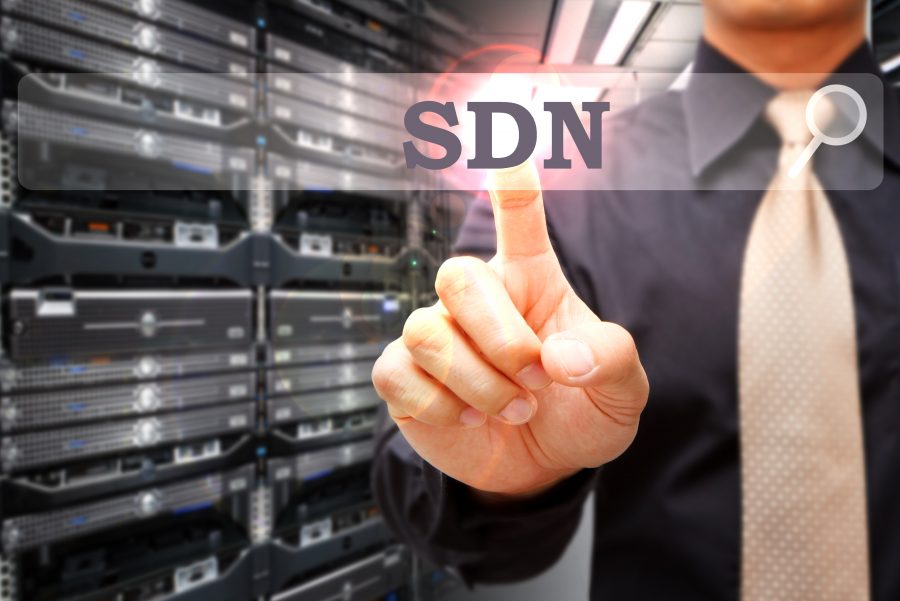Traditional networks were rigid in having a static architecture that could not support scalable and dynamic storage needs of the current IT systems. Now that is no longer the case, with the emergence of Software Defined Networking (SDN) all of that has changed, one can now run the software independent of the underlying hardware, courtesy SDN.
Why is SDN relevant?
Legacy networks have limitations in the form of fixed appliances and hardware which require high involvement of manual administration and this leads to consumption of excessive time and efforts. With the kind of business revolution going across industries there is a need for scaling up or changing networks for better capabilities and applications, and SDN plays a key role here.
SDN inspired by server virtualization separates the network intelligence and configuration from the physical hardware through the introduction of an abstraction layer in between. By virtue of this, SDN facilitates a programmatic control over the virtual network and the physical devices allowing for a dynamic response to changing network conditions.

The essentials of SDN
Understanding the essentials of SDN helps network administrators realize the importance of the role played by SDN and also helps them implement SDN in a seamless and smooth manner. The following are the essentials:
Basic SDN structure:
At the structural level, SDN consists of three layers, the top layer being the application layer -that includes applications such as firewalls, flow balancers, switch/network virtualization etc., that deliver various services. Right at the bottom is the physical network layer that is nothing but hardware and components and in between these two layers is the most important layer – SDN controller. The SDN controller is the most critical element of the SDN network as it separates the control plane from the network hardware and runs it as software. The controller integrates all physical devices with all virtual devices in the network. By doing so it facilitates automated network management making it easier to integrate and run business operations.
OpenFlow Protocol:
OpenFlow is considered one the first SDN standards protocol. It defined the communication protocol in SDN network and it enables the controller to directly communicate with and direct physical devices, such as switches on how to direct traffic flows. OpenFlow was quite popular during the early 2010s with many companies embracing the same. Off late, other options such as Nicira’s Network Virtualization Platform and Cisco’s Open Network Environment are gaining popularity. OpenFlow protocol is managed by a user led organization known as The Open Network Foundation which promotes the use and adoption of SDN.
SDN and APIs:
Application Program Interfaces (APIs) are an alternate way to provide the abstraction necessary for SDN to communicate. APIs provide the channel to send instructions to devices for programming purposes. Programmers can use API documentation to code the appropriate commands into their applications. The APIs in SDN are categorized as – Northbound and Southbound. The APIs that reside on the controller and used by applications to send instructions to the controller are called Northbound as the communication takes place north of the controller. APIs that reside on the devices, such as switches and routers, and used by SDN to communicate are Southbound as communication takes place south of controller.
SDN Network overlay:
Sometimes it is difficult or complicated to build an SDN network from scratch and in such cases an SDN network overlay helps. In this case the SDN network is built as an overlay to the existing physical network. The overlay is built by setting up virtual switches inside hypervisors which create channels that use the underlying physical network. The advantage in this case is that there is no need to configure the hardware to send traffic to its destination.
The popular vendors for SDN overlay are Big Switch Networks and VMWare.
Why is SDN so essential?
SDN network protocol has come a long way since its inception in the early 2010s as more companies are embracing this technology. IT business ecosystem has undergone a sea of change over the last one decade as newer and more scalable technologies become even more important and essential. Certain factors like—explosion of mobile content and devices, popularity of cloud services and server virtualization—are driving the need for a change in traditional architectures. Traditional architecture made senses when the server was client based. With changing IT dynamics, newer requirements and need for bigger storage spaces the traditional and static IT architecture will no longer hold and will only complicate the process. SDN solves all these issues by completely making the network more dynamic and well suited for a fast changing network scenario and ever demanding business operation needs.





